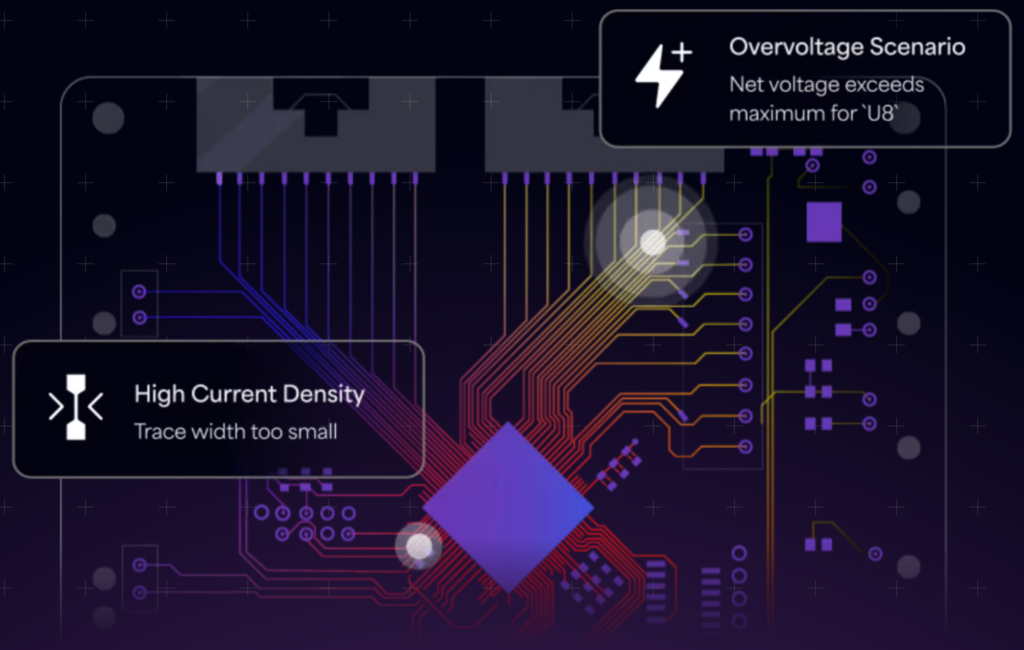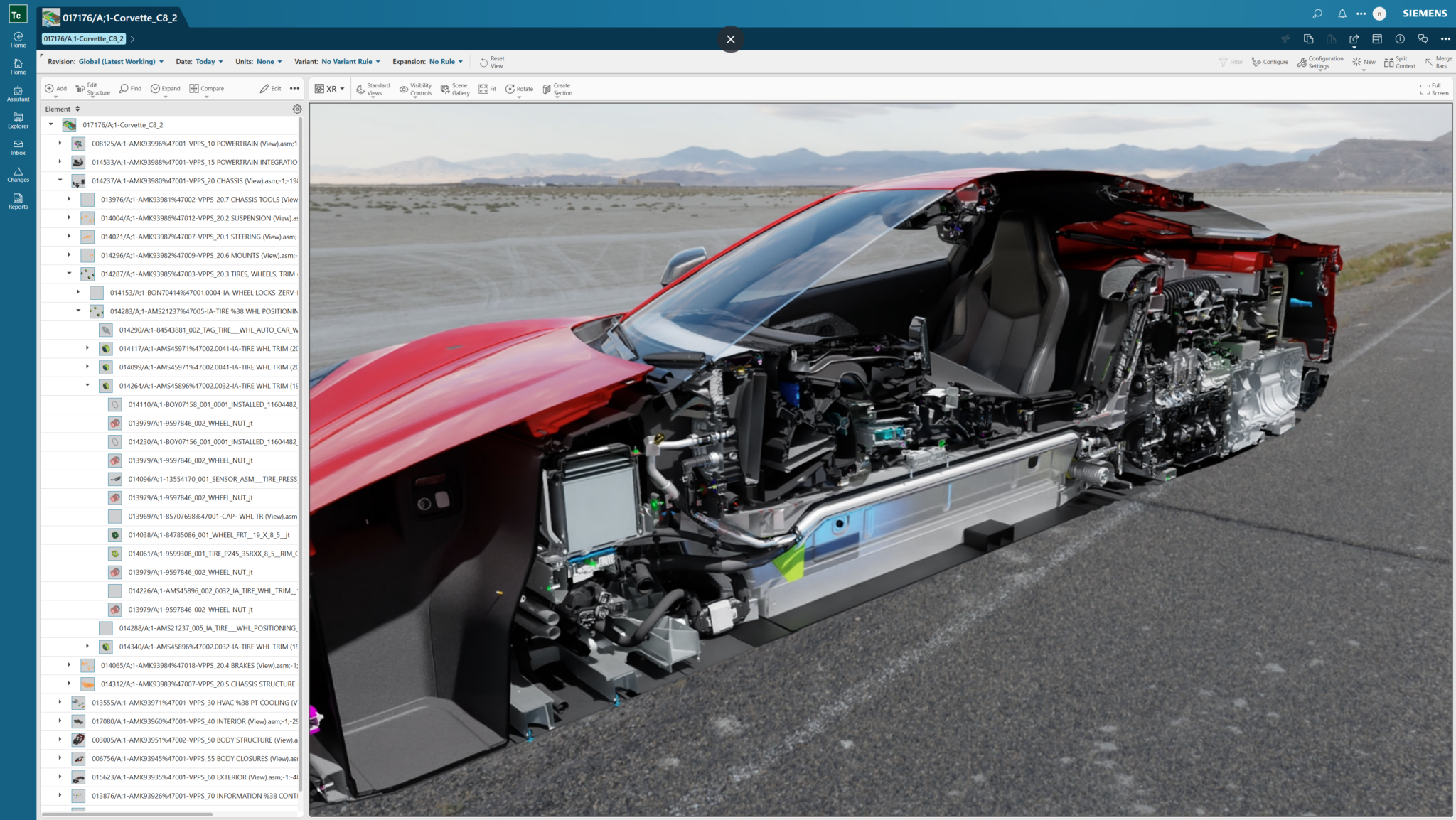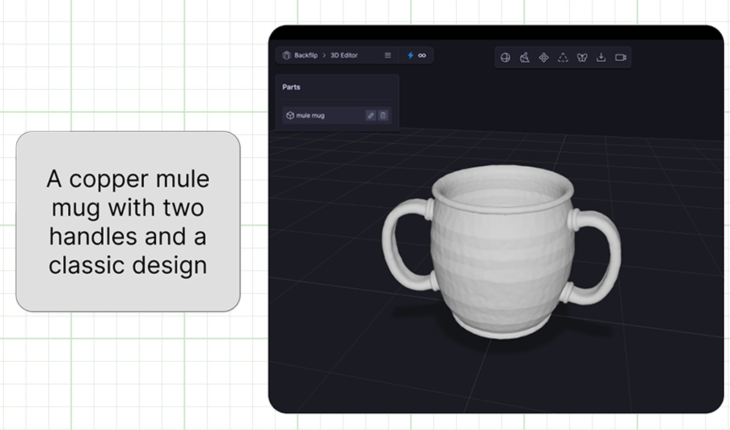The hype isn’t going anywhere, but what about the products? It’s still a game of wait-and-see.
Happy 2025! Welcome to Engineering Paper, a weekly column bringing you the latest design and simulation software news.
If you’ve gotten sick of the AI hype of the last couple years, I have bad news for you: it’s not going anywhere. Generative text and images may be old hat by now, but engineering software developers (and venture capitalists) are sprinting to bring AI into the third dimension.
That race got a little more crowded late last year when a startup called Backflip emerged from stealth with $30 million in funding from NEA and Andreessen Horowitz. Calling itself a “3D generative AI company,” Backflip offers a design platform that turns text prompts into 3D-printable models. The company was founded by the same duo that launched 3D printing company Markforged: Greg Mark, serving as Backflip’s CEO, and David Benhaim, CTO.

Backflip isn’t the first to try this. Last year I reported on Autodesk’s Project Bernini, a text-to-3D generator that’s theoretically impressive, but still far from being a practical design tool.
Is Backflip any better? I wish I could say. While the platform offers a free trial, there’s currently a waitlist due to “overwhelming demand.” I’ll weigh in when I can. (If you’ve tried it, let me know what you think at [email protected].)
AI for electrical engineers… maybe
I told you the AI fervor wasn’t going away. Another example comes from Cadstrom, a Canadian startup developing AI tools for PCB design validation that recently announced $6.8 million in seed funding. Cadstrom claims that their generative AI-based software will help electrical engineers avoid costly PCB redesigns and shorten design cycles by as much as 66 percent.

I’ll believe it when I see it. I can’t help but be reminded of SnapMagic, formerly SnapEDA, which announced in 2023 that it had developed a generative AI for circuit design. Fourteen months later, I’m still waiting to see anything other than provocative screenshots. Let’s hope Cadstrom can deliver quicker.
Speaking of quick, Nvidia won’t slow down
There’s got to be something to all this AI hype, right? Well there’s certainly something in it for Nvidia, which has ridden the AI wave to become the second most valuable company in the world. The chipmaker made a characteristically dense series of announcements today at CES in Las Vegas focusing largely on products and partnerships in industrial AI.
Among those products are three new Omniverse Blueprints, reference workflows for developing AI-connected digital twins in the company’s Omniverse platform (here’s more on one of the first Blueprints Nvidia announced a couple months ago for real-time simulation).
The new Blueprints are Mega, for testing and developing robot fleets; Autonomous Vehicle (AV) Simulation, for AV developers to review and generate data; and Omniverse Spatial Streaming to Apple Vision Pro, which helps developers create apps to visualize digital twins on Apple’s mixed reality headset.
The partnerships include the usual who’s who of engineering software developers: Altair, Ansys, Cadence, Siemens and quite a few more. They’re all using Omniverse or integrating it into their own software in some way. Siemens, for example, just launched the Teamcenter Digital Reality Viewer, an app for photorealistic visualization powered by Nvidia Omniverse libraries.

That’s just a taste of everything Nvidia announced at CES—for all the details, read the press release here. (Tip: you might want to keep the Nvidia glossary open in another tab.)
One last link
I’ll leave you with something that made me laugh recently: 37 things that confuse me about 3DEXPERIENCE, written by Peter Brinkhuis of CAD Booster.
Got news, tips, comments, or complaints? Send them my way: [email protected].





